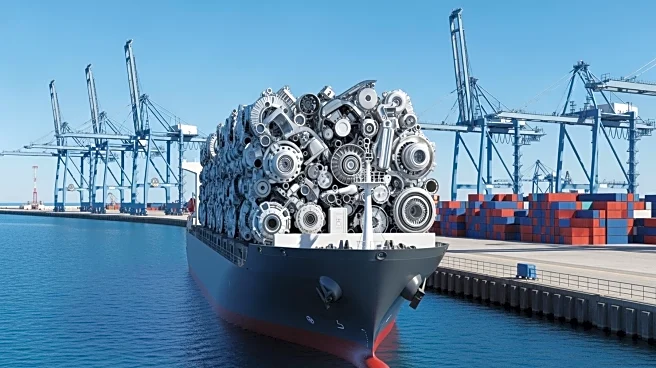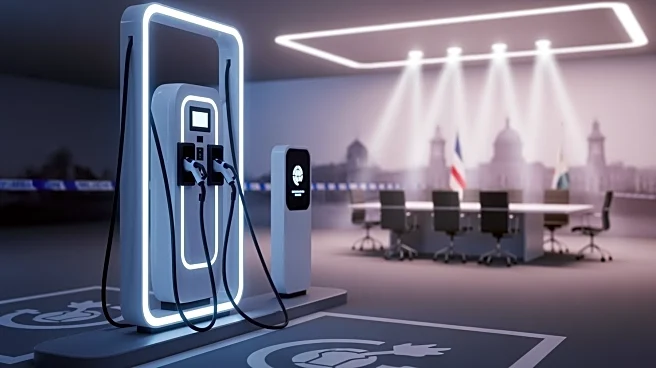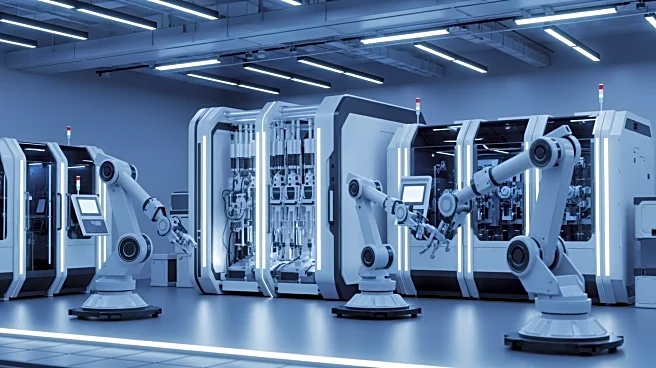What's Happening?
The implementation of a 25% tariff on automobiles and auto parts has led to a significant decline in U.S. auto imports, affecting the consumer market. The tariffs, introduced in April and May, have resulted
in a reduction of supply and increased prices for consumers. North Carolina, a major player in the automotive industry, has seen a 26% decrease in vehicle and parts imports, from $4.4 billion to $3.3 billion. This decline has led to fewer affordable options for consumers, highlighting the trade restrictions' impact on consumer costs. While domestic producers have experienced a modest increase in activity, the overall effect has been a surge in export activity, with exports rising by approximately 37% year-to-date.
Why It's Important?
The tariffs are designed to protect domestic producers by reducing imports, but they also generate significant revenue. However, the effectiveness of tariffs in limiting imports means fewer imports to levy tariffs on, potentially reducing revenue generation. Major automotive companies like Toyota and General Motors have reported substantial financial impacts due to these tariffs, with Toyota expecting a $9.5 billion hit by the end of the fiscal year and GM estimating a $4-5 billion annual impact. These financial strains could lead to reduced profitability and potential job losses within the industry.
What's Next?
The automotive industry may face continued challenges as tariffs remain in place. Companies might need to explore alternative sourcing strategies or increase domestic production to mitigate tariff impacts. Consumers could see further price increases, leading to decreased demand for new vehicles. The industry may also push for policy changes or tariff exemptions to alleviate financial pressures.
Beyond the Headlines
The tariffs could lead to long-term shifts in the automotive industry, including increased domestic production and potential changes in consumer purchasing behavior. The financial strain on major companies might accelerate industry consolidation or drive innovation in cost-effective manufacturing processes.













